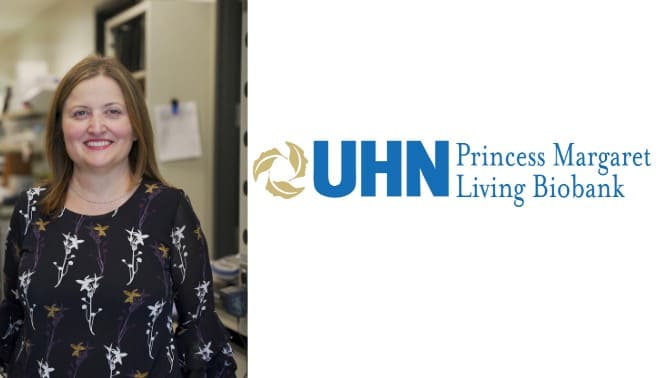
An Interview with Nikolina Radulovich

How did your research with Dr. Tsao and the University of Toronto lead to your role at PMLB?
After obtaining my Master's from Brock University, I started a research role at UHN, guided by Dr. Ming-Sound Tsao. This research resulted in 8 publications on various cancers and led me to advance my studies with a Ph.D. from the University of Toronto. My Ph.D. work aimed to identify key genes in pancreatic cancer, and I earned the inaugural Vanier Graduate Scholarship. After graduating, I took on a role at the Princess Margaret Cancer Centre, and for the past six years, I have had the opportunity to work for PMLB as a Staff Scientist.
What key responsibilities and initiatives do you lead at PMLB, especially concerning patient-derived organoids (PDOs)?
At PMLB, I oversee a team of scientists dedicated to cultivating PDOs—replicating cancers in a lab setting to explore new therapeutic avenues and deepen our understanding of the disease. We extract cancerous tissue samples from patients with varied cancer diagnoses and nurture these samples into organoids, which then proliferate rapidly and mirror a patient's tumor biology. We make these organoid models accessible to UHN researchers, outside academic entities, and industry collaborators to advance cancer research. Additionally, I spearhead and execute grant-backed research projects leveraging organoid technology alongside multiple Princess Margaret researchers.
How have PMLB's PDO models and resources amplified UHN research?
Since PMLB's launch in 2017, our scientists have cultivated over 300 renewable and meticulously detailed PDO models spanning a variety of tumor types, including lung, colon, breast, pancreas, esophagus, and ovary. Numerous UHN researchers have integrated these models into their studies. Beyond offering models, the PMLB Organoid Core supplies organoid essentials, offers training and lends expert project guidance to UHN investigators. The PMLB organoid repository includes models generated from colorectal, pancreatic, and lung cancer tissues. We are also at the forefront of crafting biomarker-directed investigations and conducting drug tests on PDO models.
How do collaborations within UHN enhance the success of PMLB's Organoid Core?
Collaboration lies at the heart of the PMLB Organoid Core's success. We work with UHN Principal Investigators and various research cores to refine our processes. We also assist clinical research groups with integrating organoid model creation into their studies. Our efforts have resulted in many co-authored papers with UHN researchers and funded research grants, such as the Canadian Institutes of Health Research Project Grant, Cancer Research Society Operating Grant, and Organoid Challenge Grant (OVCAN). UHN cores we collaborate with include PM Genomics, the Applied Molecular Profiling Laboratory, the UHN Biospecimen Program, and the Advanced Optical Microscope Facility.
How is PMLB advancing organoid technology and partnering with institutions to innovate and explore rare tumors?
PMLB is steadfast in advancing organoid technology, aiming to elevate the success rate of organoid creation from diverse tumor types. This year, we're augmenting our inventory with PDOs from hepatocellular carcinoma, mesothelioma, and cholangiocarcinoma. In collaboration with the University of Toronto's Acceleration Consortium, we are looking to automate facets of organoid initiation, from biospecimen handling to drug testing. Our expanded offerings will also encompass genome editing within PDOs. Furthermore, in a joint initiative with the UHN Biospecimen Program, we are embarking on a pioneering project to craft PDOs from rare tumor variations.
For more information on AOMF, please visit: pmlivingbiobank.uhnresearch.ca.